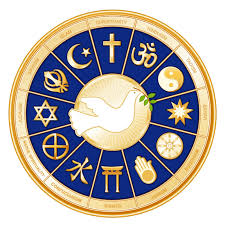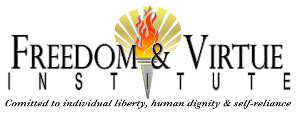In many parts of American society, diversity has become the holy grail. It is the achievement to be pursued above all others. Educational, economic, and cultural success either take lower priority or are in fact measured by it. California now requires corporate boards to reflect it.
In the mad rush to attain it, a question arises. What is it?
The Independent Institute’s commentary on the California measure explains the prevailing assumption concerning the meaning of diversity. Above all else, it means racial or ethnic distinction. Leaving aside the enormous problem of racial definition, this is a highly restrictive view of diversity—yet it dominates the arena as though it is self-evidently the most important kind of human difference to recognize. Somewhat lower in priority but also popular as criteria of diversity are differences in gender and sexual orientation. That’s usually about as far as the diversity agenda goes.
The arguments for promoting these forms of diversity normally run along two tracks. One is the claim that diversity enhances the performance or authenticity or excellence of the organization in question by bringing a variety of voices and perspectives to the table. The other is that there is an obligation in justice to provide opportunity for members all groups. Both ideas are captured in the words of one lawmaker advocating the California measure, who asserted that it will ensure that “all of California’s corporate boards will better reflect the diversity of our state.”
Both of these rationales are generally defensible at the level of principle. The management of institutions is improved by taking into account a number of perspectives. People should have the opportunity to advance and succeed regardless of their background or personal characteristics (assuming that those characteristics don’t inherently disqualify them from the activity in question).
Yet the acceptance of these ideas in principle leaves open expansive areas of debate as to how they are to be applied in practice—and this is what most diversity professionals and activists and their enablers either fail to appreciate or willfully dismiss. Why, exactly, is race the chief marker of diversity? Any argument in favor of it can be answered by counterexamples. Race must be the criterion, many say, because black Americans have been systematically discriminated against and are therefore underrepresented. It’s a well-documented fact that political conservatives have been discriminated against systematically in the nation’s most prestigious universities and that their numbers are consequently vanishingly small at those places. In most departments, (racial) minority faculty outnumber conservative faculty. Yet concerted efforts to recruit minorities continue, while there is no admission that the lack of conservatives is even a problem.

Photo Credit:State of Formation
Religious identity is another neglected category. California’s corporate boards will contain more blacks and Hispanics, but that does that mean that they will ipso facto “better reflect the diversity” of the state? They will do so only if it is conceded that racial diversity alone is the kind of diversity that matters. Will the boards better reflect the religious diversity of the state? Will the number of board members of each company match the percentages of Californians who identify as evangelical Christian, Muslim, Jewish, Catholic, Mormon, atheist? Does anyone care? Again, according to the rationales supporting racial diversity, they should. All of these religious groups have been discriminated against, sometimes viciously so, at one time or another over the course of American history. On that ground, we should be sensitive to their representation in the higher echelons of society. Religious belief is an extraordinarily powerful source of meaning and shaper of worldview. So, if we’re looking for diversity of opinion, surely religion ought to be taken into account.
Innumerable other sources of diversity could be adduced: profession, temperament, interest, economic class, education, geography, and so on. All of them are important, yet virtually none of them ever matter when we are bean-counting for diversity. As a result, in many sectors of American life, there is ironically decreasingdiversity. When a student, raised in the suburbs of New York by wealthy parents and educated at prestigious private schools—who happens to have some African blood—is admitted to Harvard, the university’s diversity has not increased. Admission of the son of a poor Pentecostal preacher from eastern Tennessee, on the other hand, would do the trick. Yet, in the eyes of the diversity industry, one is “black” and the other is “white” and that’s all you need to know.
The problem, then, is not a concern for diversity per se, but the reductionism of the ideology of diversity that has come to dominate the field. It turns out that champions of diversity don’t celebrate diversity fulsomely enough. There are diverse ways of being diverse. When one way trumps all others, the cause of diversity culminates in the triumph of conformity.


